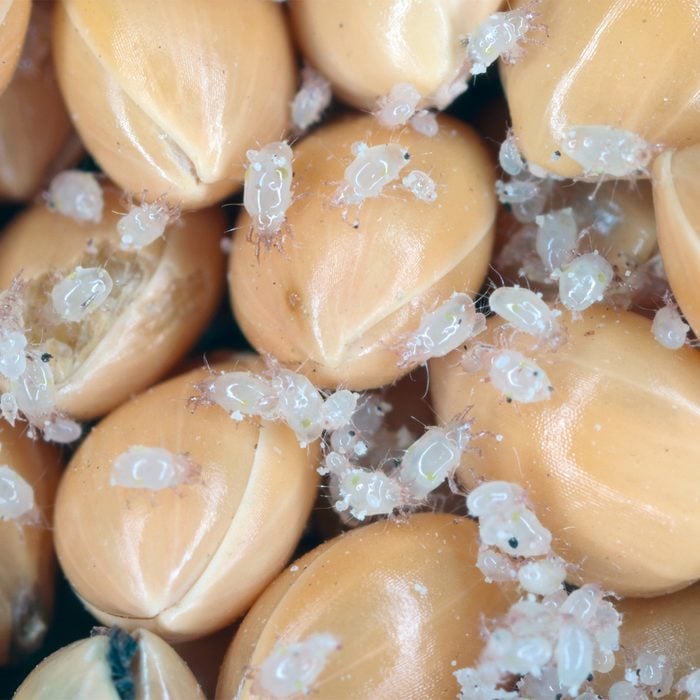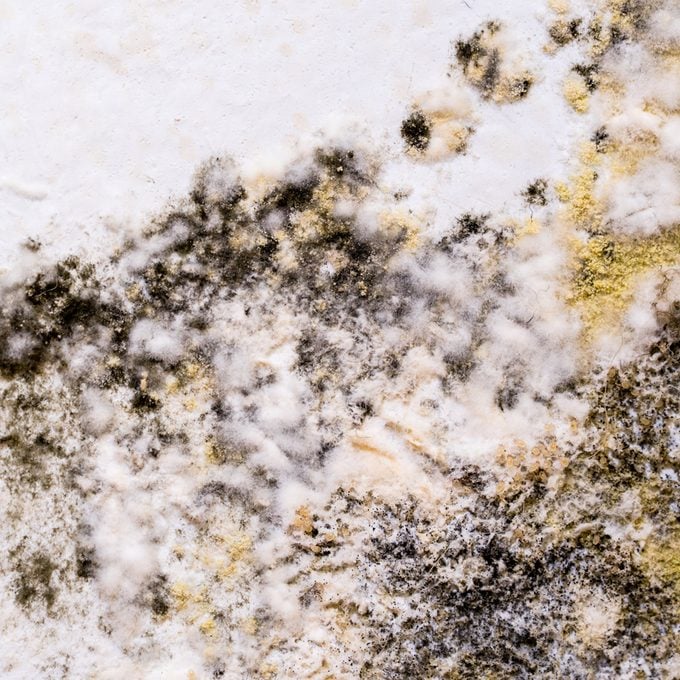Everything You Need To Know About Mold Mites
Updated: Apr. 21, 2024

Mold mites! Yes, they're a thing. Minute and fast-producing, these little specks-of-a-bug "mite" surprise you. Here's what to know.
Small and prolific, the mold mite is emerging as the bug of the moment. Just like getting rid of clover mites is possible, you can also deal with this latest bug.
“Mold mites are a general term for many species that have the ability to feed on fungi and grow large populations in a very short period,” says Ronald Ochoa, Ph.D., a research scientist specializing in mites for the United States Department of Agriculture (USDA).
With Ochoa leading the way, let’s delve a little deeper into the life of the mold mite.
On This Page
What Are Mold Mites?
According to Ochoa, the mold mite was first described in 1781 by Franz von Paula Schrank, a priest in Vienna, Austria. Of the 6,000 species of mites in the world, around 60 belong to the mold mite genus.
Adaptable to all kinds of environments, from dank basements to humid cavities of a tree, mold mites typically attack and consume decaying materials (wood, cardboard, etc.), fungi, bacteria, algae, manure and dead animal carcasses. Some may also feed on seeds and bulb plants.
Ochoa says there are several common species of mold mites, known as “Astigmata” by the scientific community. One in particular, the Tyrophagus putrescentiae, is considered a “cosmopolitan” arthropod. That means it can be found in a range of places around the world.
“The mold mite is one of the most amazing species of mites on the planet,” Ochoa says. “NASA scientists have even collected mold mites from the Russian space station Mir, showing just how resilient and adaptive to the most hostile environments these mites truly are.”
Fun fact: Tyrophagus putrescentiae translates to “cheese eater” in Latin.
What Do Mold Mites Look Like?
Besides being teeny tiny, mold mites are almost transparent, making them challenging but not impossible to see with the naked eye. A magnifying lens or the zoom feature on a smartphone camera could help.
Mold mites measure no larger than one millimeter long. They’re white with tan-to-brown tones on the legs and the area around their mouthparts (the gnathosoma).
Mold miters are confused with dust mites because they’re found in the same places. Ochoa says it’s easy to confuse the two. “One of the simplest ways to tell the difference is that mold mites have around six long setae (hairs) while dust mites have only a couple of long hairs on their bodies,” he says.
Fun fact: “Mites are actually closer to spiders than insects,” says Ochoa
Mold Mite Infestation Signs

Because mold mites have short life cycles (around nine to 30 days), they multiply quickly. Before you know it, you may have a mold mite infestation.
Here are signs of a mold mite infestation:
- White frosting or brown staining on moldy areas;
- Gray or brown “dust” or “biomass” under a shelf or near food products;
- Large clusters of little white dots that migrate or appear to “walk across” surfaces.
Fun fact: A female mold mite can lay between 500 to 800 eggs in her brief but productive lifetime.
Are Mold Mites Dangerous?
Not to humans. Farm animals have been known to experience gastric problems from eating stored grain or feed infested with mold mites.
Humans and pets alike should avoid food contaminated with mold mites. This can be achieved by keeping well-sealed food dry and stored in a clean place.
Mold mites are often associated with allergies, and their presence may trigger asthma or sinus problems. Their prickly hairs can irritate skin, and they may contaminate laboratories, air conditioning systems, storage areas and pet food.
The good news is, mold mites rarely bite, and they don’t carry diseases or damage property. But the mold that attracts them can rot your home’s frames and walls, and present health problems to you and your family.
How To Get Rid of Mold Mites
The first step is removing their food sources. “Clean, clean, clean,” is the magic word, Ochoa says.
While scrubbing up, focus on cracks and crevices where mites like to hide. In addition, remove any visible mold with a solution of bleach or vinegar and water.
How To Prevent Mold Mites
Create an inhospitable environment for mold mites to dwell and reproduce by doing the above, plus:
- Replace dust-filled filters in air conditioning and heating units regularly.
- If mold has formed on cushions or soft toys, wash and dry at high temperatures.
- Ensure your home is well-ventilated.
- Move furniture away from walls, leaving space for air to circulate.
- Run a dehumidifier to remove moisture.
Ochoa also suggests a simple and practical way to keep mold mites out of your home: Wipe your shoes on “welcome” mats before entering the house.
If you find a large infestation and DIY solutions fail, consider calling in a professional pest removal and/or mold remediation company.
“The reality is that mold mites are everywhere,” says Ochoa. “The best defense against mold mites is to keep your home or office clean, check filters often and invest in a good vacuum cleaner.”
